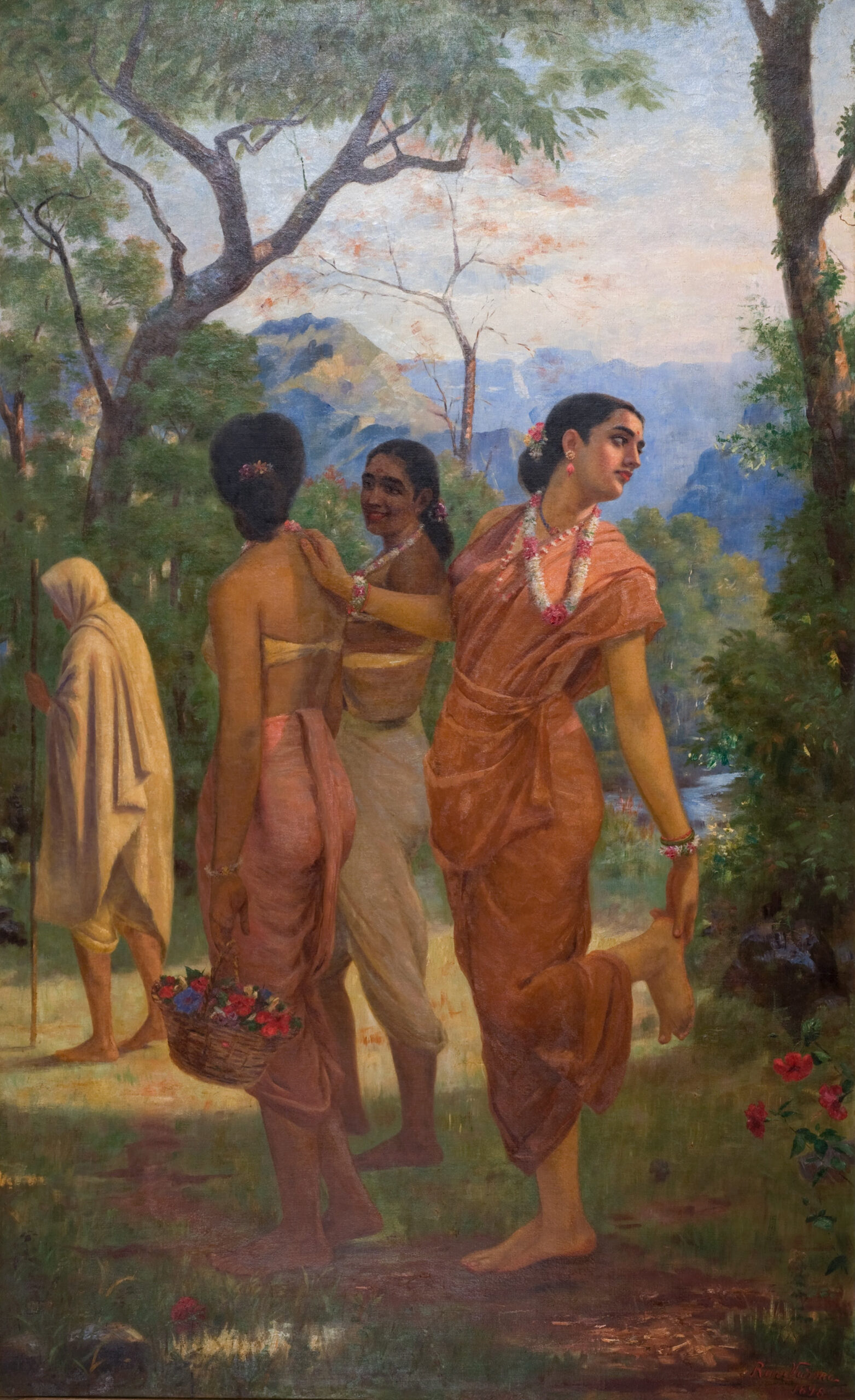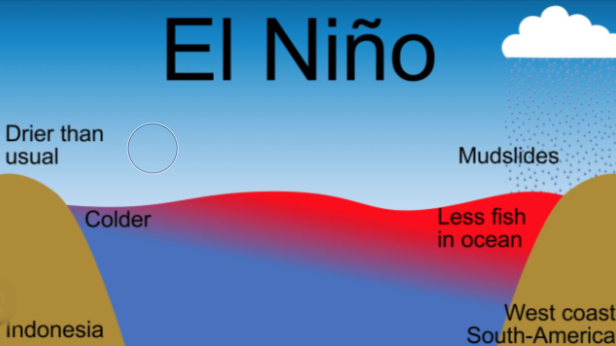Raja Ravi Varma: The Visionary Painter Who Bridged Tradition and Modernity
Raja Ravi Varma, one of the most celebrated painters in Indian art history, is often hailed as the artist who beautifully merged traditional Indian art with European academic painting techniques. Born on April 29, 1848, in the royal family of Kilimanoor, Kerala, Varma’s contribution to Indian art remains unparalleled. His ability to blend Indian mythology and European realism brought a revolutionary change in how Indian art was perceived, both in India and abroad.
Early Life and Training
Ravi Varma’s talent was recognized at a young age. Growing up in a royal family, he was exposed to classical literature and mythology, which would later heavily influence his works. He later trained under Theodor Jenson, a European artist, where he learned the fine nuances of European academic realism.
This blend of styles became Ravi Varma’s signature: using European techniques of light, shadow, and perspective while drawing inspiration from Indian epics like the Ramayana and the Mahabharata.
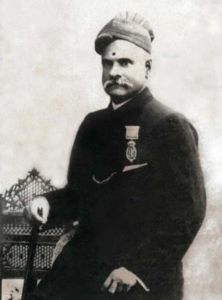
Raja Ravi Varma’s Painting Style
Ravi Varma’s works are often lauded for their remarkable realism. He adopted oil painting techniques from European art, which allowed him to capture intricate details of his subjects, from delicate expressions to detailed garments and surroundings. His mastery of the human form and ability to evoke deep emotions made his paintings lifelike, almost photographic in precision.
1. European Realism in Indian Themes: Ravi Varma’s genius lay in using Western realism to depict distinctly Indian themes. His mythological characters were painted with an emphasis on anatomy, depth, and perspective. He brought figures from Indian epics to life with a realistic portrayal, which was not commonly practiced in Indian art at that time. Figures like Lakshmi, Saraswati, and Krishna, when painted by Varma, looked human, relatable, and divine at the same time.
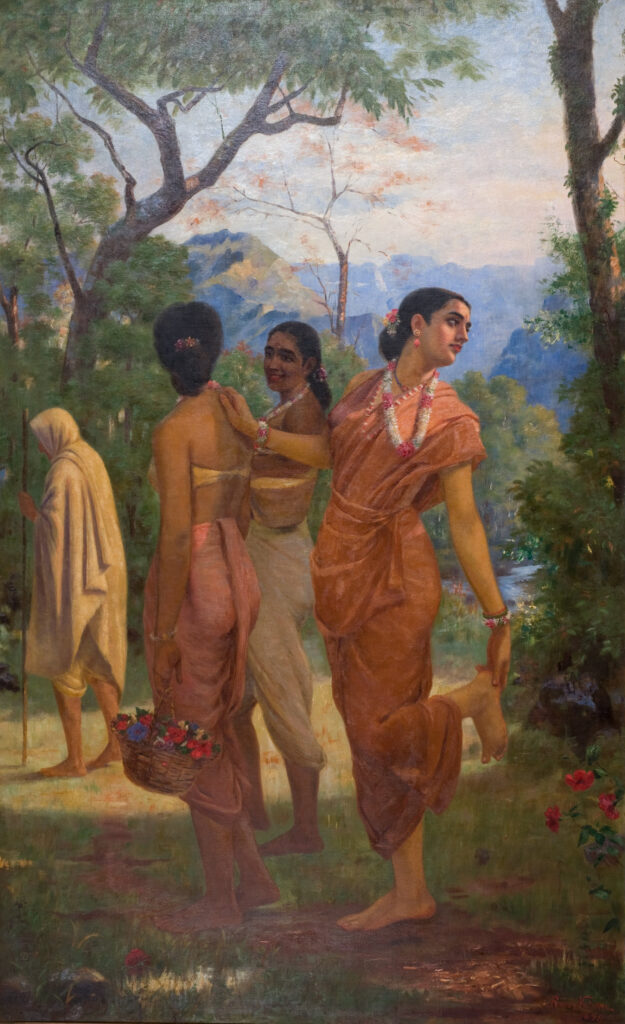
2. The Use of Oil Paints: Before Varma, Indian painting primarily used watercolors and tempera. Oil paints, a medium more common in the West, allowed for depth, texture, and more vivid, lasting colors. This helped Varma to convey emotions more powerfully, enhancing the vibrancy of his compositions.
3. Mythology with a Modern Lens: Ravi Varma’s choice of subjects from Hindu mythology resonated with a wide audience. His depiction of mythological scenes was not just illustrative but transformative. By humanizing gods and goddesses, he made them accessible, ensuring a strong emotional connection with his viewers.
4. Portraits of Nobility and Commoners: Ravi Varma was also known for his exceptional portrait skills. He painted members of royal families, nobles, and commoners with equal grace. His portraits of Maharani Laxmibai of Baroda and others demonstrate his ability to capture both grandeur and vulnerability in his subjects.
5. Lithographs and Democratizing Art: Perhaps his most significant contribution to Indian art was his use of lithographs. In an effort to make his art more accessible, Ravi Varma set up a printing press, where he began producing prints of his paintings. This allowed his art to reach common people, making images of deities like Saraswati, Lakshmi, and Rama available to the masses. These lithographs were hugely popular and helped in shaping popular religious iconography in India. They also marked the beginning of mass production of art in India.
https://topnewssurf.com/goddess-gayatri-the-divine-mother/
Notable Works
Some of Ravi Varma’s most iconic works include:
- Shakuntala: A beautiful painting depicting the moment when Shakuntala is lost in thought about her beloved, Dushyanta. This painting is celebrated for its poetic beauty and emotional depth.
- Jatayu Vadham: A dynamic and poignant scene from the Ramayana where Jatayu, the vulture king, battles Ravana to protect Sita. The painting is filled with movement, tension, and heroism.
- Lakshmi: Varma’s depiction of the goddess Lakshmi remains iconic. The goddess, shown standing on a lotus, holding her symbols of wealth and prosperity, became a popular religious image across India.
- Damayanti and the Swan: This painting, part of the Nala-Damayanti series, captures the tender moment when Damayanti confesses her love for Nala to a swan. It is celebrated for its grace, composition, and delicate portrayal of love.
https://en.wikipedia.org/wiki/Raja_Ravi_Varma
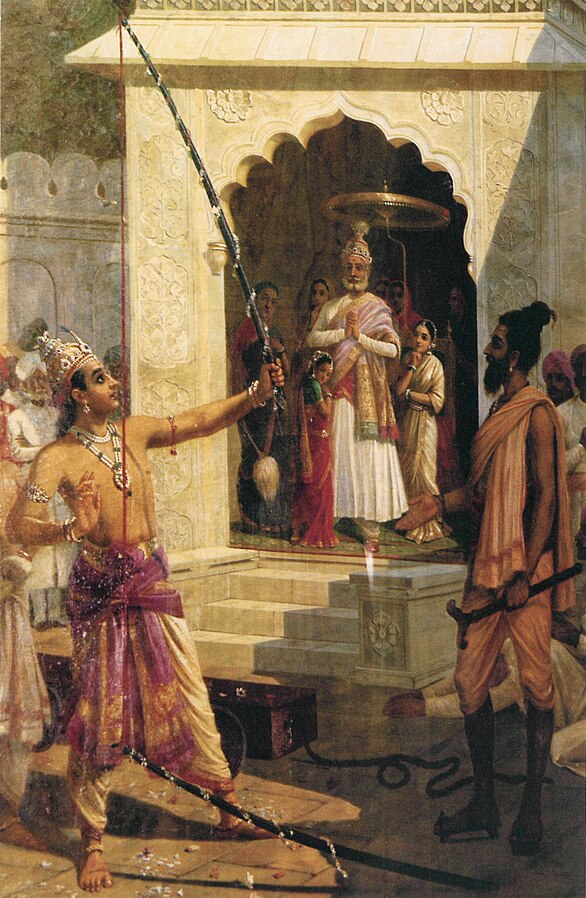
Legacy
Raja Ravi Varma’s legacy is enduring. His influence extends beyond his artwork, leaving a mark on popular culture, cinema, and even advertising. By combining European techniques with Indian themes, he laid the foundation for modern Indian art. He also democratized art through his lithographs, ensuring that divine imagery reached the homes of the common man, not just palaces and temples.
Critics have occasionally debated his approach, arguing that the heavy European influence might have compromised the authenticity of traditional Indian art. However, Varma’s contribution to making Indian themes accessible to a wider audience is undeniable.
Raja Ravi Varma was a visionary artist who brought Indian art into a modern framework while preserving its deep-rooted connection to mythology and culture. His pioneering work in blending Indian themes with European realism left an indelible mark on the world of art. Today, he is remembered not just for his technical brilliance but also for his ability to create a visual language that resonates with the spiritual and cultural ethos of India.
Ravi Varma’s art continues to inspire, reminding us of the timeless beauty of mythology, the power of realism, and the capacity of art to transcend boundaries. His works remain a vital part of India’s artistic heritage, celebrated in galleries and homes alike.
